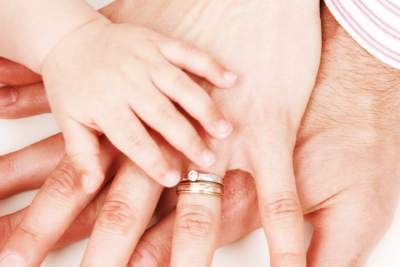For the safety of the writer, this piece has been published anonymously.
Every part of the term “domestic violence” is misleading.
The author bell hooks once said that the proper name for domestic violence is patriarchal violence because violence against women and children does not begin at home. It is directly connected to sexism and male domination. It is endured in the home but first borne out in public through institutionalized male domination.
And domestic (patriarchal) violence doesn’t start with violence.
It starts more quietly, more insidiously. It starts with him putting her down, making her feel small. It begins with little moments of him trying to control her. It begins with the incidents my mother shrugs off, thinking that all couples argue occasionally. She puts these red flags out of her mind, not even thinking of them as red flags. They’re just little blips in their marriage. She thinks she can deal with them. They love each other.
Eventually, her self-esteem erodes until it’s gone. The daily put-downs have eaten it away.
The moments of him trying to control her have left her living in constant fear of him. When the moment comes, when he physically pins her down to the floor for the first time, she flinches before his hands make contact with her body. She has been living in fear of this long before it occurred, without ever consciously knowing it. She doesn’t realize she has been holding her breath until he leaves for work and all the tension leaves her body. She exhales and relaxes and it’s as if she’s a marionette whose strings have been cut. When he returns in the evenings, she listens carefully to the sound of his footsteps to figure out how quickly she’ll have to run. Quick, heavy footfalls on the stairs mean he’s angry, and he is coming for her.
By the first time he hits her, he has already broken her down to the extent that she doesn’t know a better life is possible. She already fears him enough that it controls her and robs her of choice. She doubts herself and her ability to survive without him. Beyond that, he needs her. He can’t help it. She can make him better, and then he won’t hurt her anymore. She doesn’t think of herself as a battered woman; she’s just a very strong woman in love with a deeply troubled man, and she alone can help him face his demons.
An unspoken rule is quickly introduced into the house: my sisters and I cannot invite friends over, because of the risk of something happening and someone seeing it. Sometimes he disappears and shuts off the water, heat, and electricity, along with all of our phones, just to remind us that he controls us. We learn not to speak of what we see to anyone. We do not ask for help. We problem solve and survive within the confines of our current situation, adopting the perspective that we can and will always get by on less.
After he pins me to the floor and twists my arms behind my back for hours, I can’t lift my arms above my head or hold them fully outstretched for months. When an adult notices the physical pain I’m in and asks what happened, I lie. One night, the police come. My mother and I do not sleep all night. She sends us to school in the afternoon the following day. We tell no one, although I almost break down thinking about having to return home at the end of the day.
When he breaks down my bedroom door, we just add it to the list of things in our house that he broke and that consequently will never be repaired. Domestic violence often takes the form of the abuser destroying household items in front of his victims as a method of intimidation. Ordinary household issues are neglected because our circumstances are anything but ordinary, and our lives become small and limited to the perimeter of our house. Things like holidays, community events, and driving lessons are thrown out the window because they’re outside the realm of day to day survival.
When I was living in a household where I experienced daily domestic violence, I thought constantly about whose job it was to intervene and help us. I often wondered if we had belonged to a synagogue, whether someone would have recognized what was going on in our house. In the midst of our absolute isolation, every fiber of my being was crying out for someone to see the danger we were in. I remembered being a child in the women’s bathroom in a synagogue and seeing a small white card sitting in the basket where paper towels were kept. The card included the name and phone number for an organization helping women experiencing domestic violence.
The warning signs are often more subtle than visible bruises. Domestic violence begins first with a power imbalance and the exploitation of it. It begins with gaslighting, psychological domination, and mind games.
So, warning signs may be harder to see. But psychological trauma comes with its own set of symptoms and behaviors that clergy can and should learn to recognize. While the domestic violence conversation often focuses on battered women, children are also witnesses and victims of domestic violence. It is especially important to be able to recognize signs in children because they are unlikely to disobey their parents by speaking up. Children experiencing or witnessing domestic violence may manifest what’s happening in behaviors like acting out, anxiety, or sudden, drastic changes in school performance.
Community members also have to pay attention to relationship dynamics around finances. Warning signs of domestic violence in a couple can include casual misogyny through inequitable sharing of household labor. It can be financial abuse or a woman disproportionately staying at home with the children. Women are often hesitant or unable to leave abusive situations due to financial stability, and abusers will exploit this, withholding money or financial resources like child support and accusing their victims of being ungrateful.
In general, we need to be hyper-aware of the gender dynamics in our community. Domestic violence is based in a sense of entitlement men feel to externalize their emotions and take them out on others. It’s based in the many casual ways women attend to the needs of full-grown men at the expense of their own, out of fear for their own safety. It’s based in the mentality that men can’t control themselves or their impulses and women must serve as moral guides, restricting their own lives as a consequence. (It became my job at twelve years old to save my abuser from himself in order to protect my family. That often meant I could not protect myself from him.) So, it should go without saying that abusers and toxic masculinity will not be tolerated in our communal spaces. We need to raise up the voices of women and femininity, both in the Torah and in our communities.
Lastly, it takes an average of seven to nine attempts for a woman to successfully leave her abuser. A woman is most likely to be killed by her abuser when – or immediately after – she tries to leave. This is the most dangerous time of an abusive relationship. We need to understand abuse as a cycle, so that we know how to predict escalation. Communities need to intervene before women try to leave. If we demand that anyone try to leave before we intervene, we are asking someone to put her life, as well as those of her children, in danger. That condition is unacceptable. We must build trust, and then provide women with the tools they need to leave safely with a new support system already in place. Our approach to helping victims has to begin with combating isolation as our top priority.
Domestic violence changed everything for me, and made me a completely different person. I became fixated on the idea that it takes a village to raise a child, because the village is the safety net that catches us when our nuclear families splinter and fray. We cannot risk allowing anyone to fall through the cracks. Our role as a community is to foster people’s healing and wellness.
We have the potential to be a lifeline to vulnerable people and provide shalom bayit, peace in the home. When I was experiencing domestic violence, I consciously chose to keep Judaism in my life. It was the only part of my abuser that never hurt me – and even had the power to help.
Domestic violence and mental health resources:
http://www.thehotline.org
http://www.shalom-bayit.org/about-us/what-is-domestic-violence/
https://m.facebook.com/Elijahs-Journey-182478658436741/
https://www.nami.org
![hands-1176674_1920 | [Public Domain], via Pixabay](https://newvoices.org/wp-content/uploads/2017/11/hands-1176674_1920.jpg)



